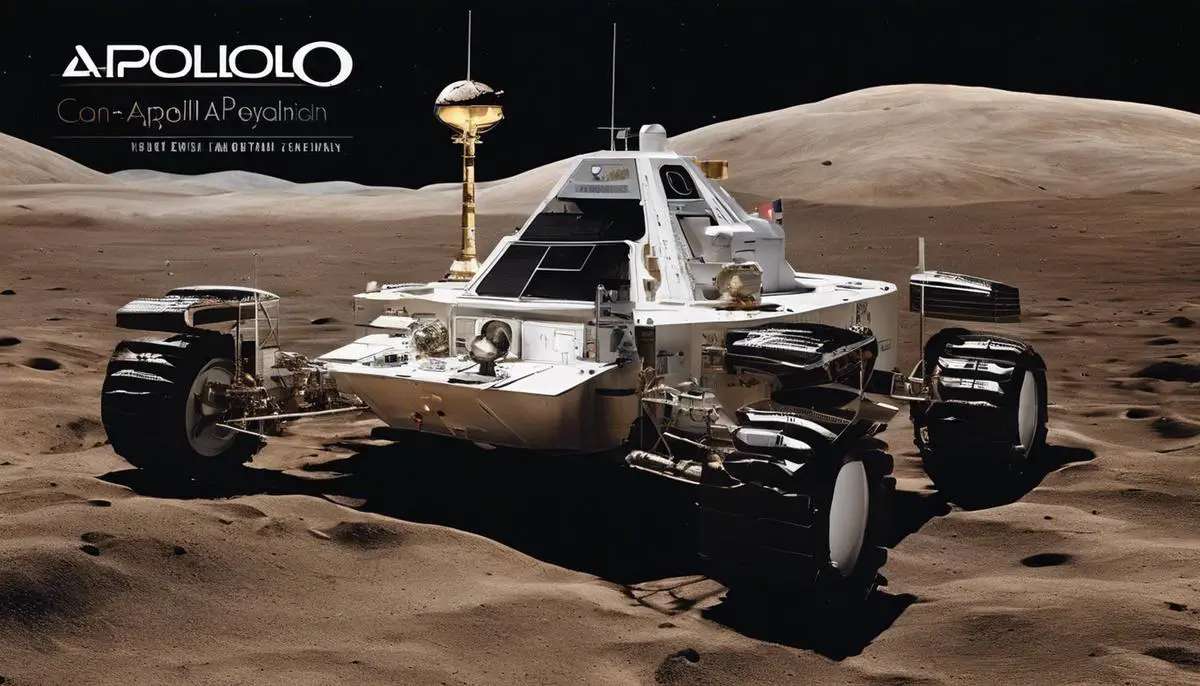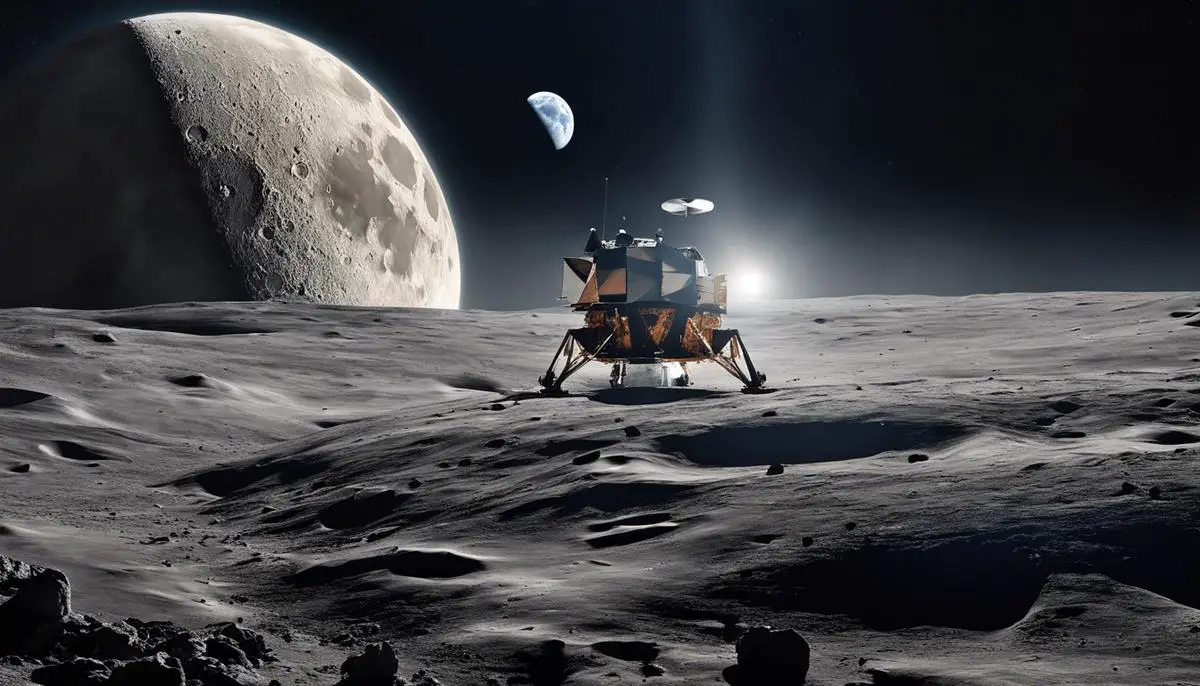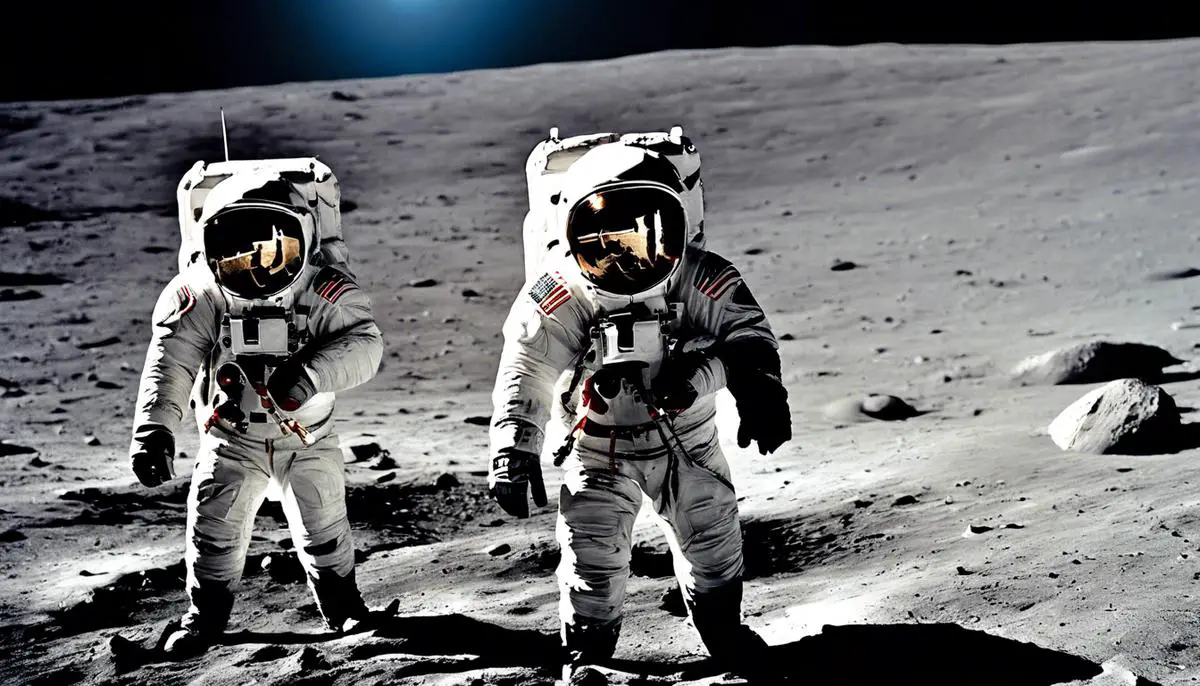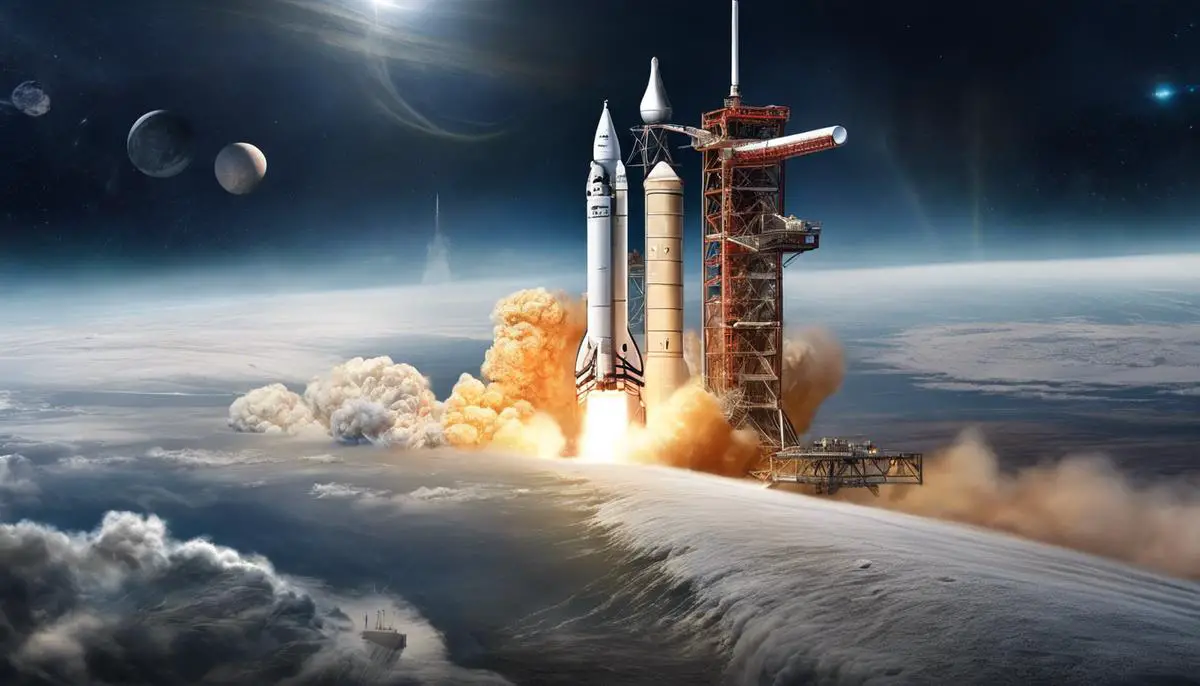As industry professionals, we stand at the precipice of a fascinating retrospective journey, transporting us back to the triumphs, turmoils, and technical breakthroughs of the Apollo program and the birth of Silicon Valley. What emanates from history’s depths is a narrative as astounding as it is enlightening. Subsequent to the deepest plunges of the Cold War era emerged the glittering heights of the Space Age and the genesis of the technology mecca, Silicon Valley. In the spectacle of human ingenuity that unfurled, we aim to delve into the spheres of political influence, scientific curiosity, and the burgeoning technological revolution, shedding light on the fascinating interconnection between the ambitious Apollo Program and the embryonic Silicon valley. Through our narration, we hope to paint the picture of an era that not only propelled humanity to surreal celestial vistas but also saw the casting of the sinews of the world’s leading edge in technological advancements.
Contents
The Genesis of the Apollo Program
The Launch of a Legend: Unveiling the Significant Factors of the Apollo Program Genesis
The inception of the Apollo Program, mankind’s colossal feat of lunar exploration, witnessed its genesis from a convergence of highly influential factors. Moreover, these triggers revealed a fascinating blend of political competition, technological advancements, and national pride, each contributing significantly to the monumental endeavor’s initiation.
Perhaps the paramount factor was the intensifying Cold War rivalry that predominantly defined the middle of the twentieth century. The citizens of the United States and the then Soviet Union were deeply enmeshed in a silent battle, not just for ideological dominance but for supremacy in technological achievements. The space race emerged as a stage for demonstrating prowess, further fueled by the Soviet’s successful launch of Sputnik 1, the world’s first artificial satellite in 1957. Annoyed and emboldened by this overt challenge, the United States pledged to retort with an equally, if not more, grand demonstration of technological might.
Technological advancements serve as another significant instigator. The arrival of the 1960s ushered in a new era of technological revolution, marked by rapid advancements in aeronautics, rocketry, and computing. Seminal inventions such as the integrated circuit drastically reduced the size of computers, making it feasible to include one on a spacecraft while consistent improvements in rocket technology made it possible for objects to escape Earth’s gravity. This period of accelerated innovation created the tangible means to render a once-unfathomable dream of lunar exploration into a concrete possibility.
Finally, national pride and the imperative vision of a charismatic leader were vital components in fostering the Apollo Program’s genesis. President John F. Kennedy, in his famous 1961 speech, ignited the nation’s spirit and sense of competition, declaring a national goal to “land a man on the Moon and returning him safely to the Earth,” before the end of the decade. This assertive objective, studded with the patriotic duty to strive for the benefit and honor of the country, rallied public opinion and support in favor of the daring quest.
Ultimately, the birth of the Apollo Program was not an event of random fortune; it was the cumulative outcome of a potent period in human history. This interplay of political rivalry, technological breakthroughs, and national willpower conceived a path that led to one of humanity’s most triumphant moments. Even to this day, the Apollo Program remains a beacon of mankind’s indomitable spirit, underscoring the extraordinary feats that can arise from even the most profound challenges.

Technological Innovations in Apollo Missions
Picking up the narrative from this point, it is imperative to understand the far-reaching implications of the Apollo missions. Indeed, the subsequent advancements in technology that spun out of these missions have irrevocably reshaped our world.
One of the most notable technologies emerging from the Apollo program is the digital flight computer. It was technology necessitated by the orbital calculations astronauts performed in real time. Capsules wholly reliant on ground controlled navigation systems could not confront the variable factors such as layovers on the moon or mid-flight course corrections. The Apollo Guidance Computer, designed to be compact and unmanned, was a fundamental element of the command module and the lunar module, laying the groundwork for the development of microprocessors.
NASA’s drive to make the lives of their astronauts safe and comfortable in the lunar lander spurred the advent of freeze-drying technology. This process enabled NASA to preserve food in a way that maintained nutritional content, reduced weight, and ensured a longer, stable shelf life – necessities for the journey to the moon and back. Today, this technology is not only integral to the food industry in creating instant, easy-to-prepare meals, but also in the pharmaceutical industry for the preservation of drugs and biopharmaceuticals.
In an endeavor to insulate against the extreme temperatures experienced within lunar modules, a multi-layered aluminized Mylar foil material was developed. Feasibly flexible and an excellent conductor of heat, this insulation technology is now extensively utilized in emergency blankets, architectural structures, and also automotive applications for thermal and IR management.
Moreover, advancements of the Apollo era also visibly influence modern medical device design and procedures. A prime example is digital signal processing. The remote monitoring of the physiological state of astronauts during the Apollo missions was a critical requirement. This led to the development of digital biomedical techniques, translating into significant improvements in the monitoring and diagnoses of medical conditions.
Remarkably, a pursuit for cleaner water for astronauts also led to the development of sanitation filtration systems. These systems employ silver ions to kill bacteria in water, an advancement now routinely used for water purification in developing countries and outdoor recreation activities.
The legacy of the Apollo missions is more profound than merely landing a man on the moon. The ramifications have influenced a spectrum of technologies from computing and food industries to medical and sanitation fields. Apollo’s inspiration was not limited to national pride, but it ignited a technological revolution that has permeated everyday life and continues to do so half a century later. Understanding this is understanding history itself; not merely as past events but as the foundations of contemporary society.

Silicon Valley’s Inception
The nexus between the Apollo missions and Silicon Valley perhaps emanates from the intersection of space exploration and computing technology. As a fledgling region far from the heart of traditional government and defense-based technological innovation, Silicon Valley offered a fanciful, yet potentially crucial piece in NASA’s intricate puzzle of successfully achieving the lunar voyage. Crucially, the region’s explosive growth around technology start-ups and electronics manufacturing in the late 1950s and 1960s aligned impeccably with the timeline of the Apollo mission development.
Though acknowledged generally for the advancement it brought to aerospace technology, it’s essential to spotlight the computing evolution that was inevitable as a part of the Apollo missions. At the heart of these computers were those critical integrated circuits, or microchips. They were designed to perform complex calculations that would direct the spacecraft. It’s worth elaborating that Fairchild Semiconductor, the Silicon Valley company, was awarded the contract to supply these state-of-the-art circuits. Not only did this connection significantly bolster Fairchild’s standing in an increasingly competitive marketplace, but it also established Silicon Valley as an epicenter for advanced electronic technology.
Additionally, the synergy extended beyond just the computing technology. The space expeditions demanded innovative techniques for the conservation and efficient use of resources, fostering developments such as solar energy technology. Silicon Valley companies came to the forefront in catering to these demands too.
A decade of technological advancements culminated in Apollo 11 landing on the Moon in 1969. While institutions across America had roles in this historic achievement, the impetus it provided to the young, striving technology companies in Silicon Valley remains a catalytic moment in the region’s path towards becoming the global hub of tech innovation it is today.
Correspondingly, the Apollo program’s technological breakthroughs precipitated a pervasive reshaping of various sectors including computing, food, medical devices, and sanitation. The impact on the computing industry is profound and twofold. Firstly, it created a burgeoning market for microchips used in everything from personal computers to mobile phones. Secondly, it underscored the evolving trend of Entrusted Computing, exemplifying trust in computer technology, thereby setting the stage for our reliance on technology today.
In the area of food innovations, the astronaut’s dietary requirements led to advances in food safety, preservation, and packaging with freeze-drying technology, revolutionizing the convenience food industry. Apollo-era technological spin-offs also transcended into the medical field, crowning achievements such as digital health solutions, components of the artificial heart, and even systems for air purification and water purification that were originally developed for spacecraft are now widely employed in the industrial and domestic sectors.
Reflecting upon the Apollo mission’s audacious challenge, it becomes clear that this unprecedented quest had an irrefutable role in accelerating the technological trajectory of not only Silicon Valley’s evolution but multiple industries across the board. The breadth and depth of the revolution sparked by the dedicated pursuit of the lunar frontier reaffirm the infinite potential of engineering and technological innovation when summoned by grand and extraordinary ambition.

Impact on Global Technology
Stepping forth into the realm beyond the repeated points, one must delve into the aspects of how the Apollo program has intersected other areas of society. It is not simply a story of placing a human on the moon, but a catalyst for tremendous growth in a wide variety of industries.
Unique circumstances of space travel called for novel solutions. Chief among these is radiation hardening – the process of making electronic components and systems resistant to damage caused by ionizing radiation. This has since been incorporated into the design of various forms of advanced technology, from satellites and nuclear power plants to medical devices used for imaging and cancer treatment.
Furthermore, the technology behind space suits has been adopted for application in firefighter uniforms and emergency service gears, enhancing their defensive capabilities against high temperatures and hazardous materials.
The Apollo missions necessitated advancements in the science of materials too. Notably, the heat shield technology invented for the Apollo capsule has been applied in a vast array of industries. PICA (Phenolic Impregnated Carbon Ablator), a type of material that can withstand high temperatures, has found applications as diverse as aircraft parts, car brakes and heat resistant clothing.
Besides physical technology, the Apollo Program led to profound effects on systems and processes. Its challenging requirements sparked the development of systems engineering and project management strategies that are employed today in major projects from constructing skyscrapers to designing advanced computer systems.
Importantly, GPS technology, which emerged in part from research and innovation fostered by the Apollo missions, has become an ubiquitous part of daily life. Modern transportation, communication, and many forms of technology now rely on GPS for locating and tracking purposes.
Recalling the computer systems created for the Apollo missions also invites us to acknowledge the substantial advances in software engineering that resulted from this endeavor. The foundational software platforms designed then have informed the complexity and robustness of today’s data management and operating systems.
In addition, the moon missions inspired a generation of students to pursue STEM – science, technology, engineering, and mathematics – careers. This translated into an exponential growth in these fields, leading to a period of intense technological advancement and proliferation.
Conversely, the tangible outputs of Apollo inspired theoretical exploration too. The endeavor brought a swath of new scientific research areas, propelling a new understanding of the universe through astrogeology and advancing the field of celestial mechanics.
Profoundly, the images returned from the moon invoked a shift in our collective perspective. Viewing Earth from the moon’s surface led to a greater appreciation of the planet’s beauty and fragility, aiding the rise of environmental consciousness and influencing a greater desire for the conservation of natural resources.
Fulfilling the lofty ambitions of the Apollo Program had far-reaching, diverse implications, catalyzing advancements that have shaped the modern world. From apparently unrelated areas such as materials science and risk management to influencing societal perception, the program was a remarkable accelerator for technological and socio-cultural progress.

Just as the seemingly audacious dream of landing a man on the moon became reality through the Apollo Program, the genesis of Silicon Valley embodies the fruition of efforts to harness technology’s transformative power in unprecedented ways. This exploration into our collective past reveals a fascinating panorama, shifting the lens through which we perceive technological innovation, and prompting us to question the catalysts of the future. The Apollo Program and Silicon Valley are, after all, undeniably monumental testaments to gleaning the extraordinary out of the ordinary. As we navigate our way forward into a future replete with dizzying technological possibilities, the retrospection of the footprints woven into the historical tapestry of space and technological exploration provides us with a rich resource to contextualize our journey thus far, and more importantly, enlightens us on the essence of transformation, resilience, and the pursuit of unprecedented human accomplishment.
